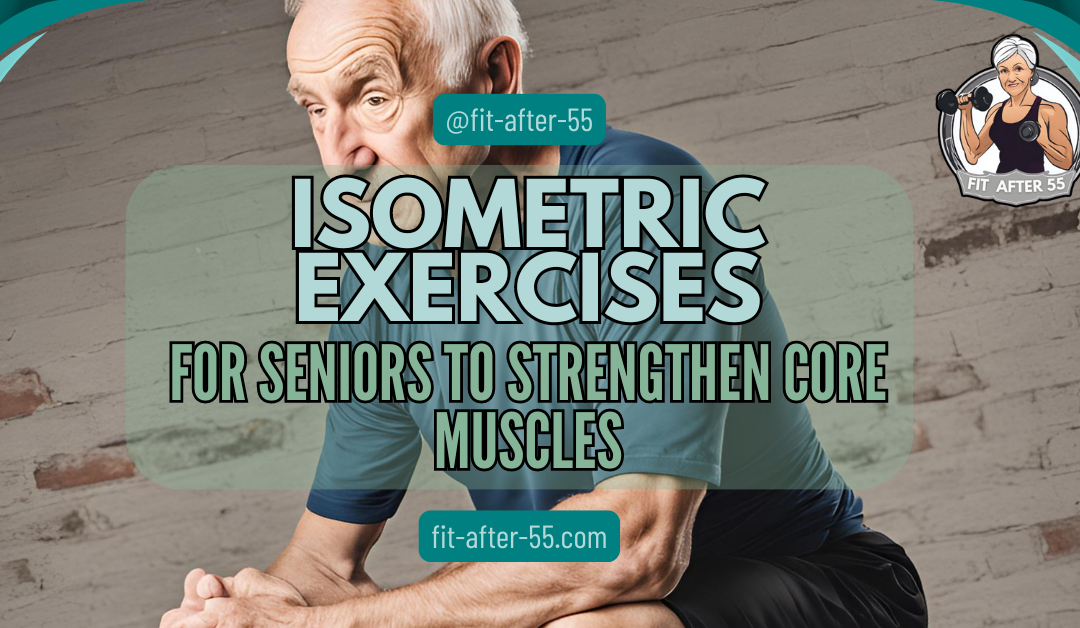Isometric exercises for seniors to strengthen core muscles are an excellent way to build strength without putting too much stress on the body. These exercises involve contracting muscles in a static position, which allows for muscle strengthening without requiring dynamic movement. This is particularly beneficial for seniors, as it reduces the risk of injury while still helping to improve stability and strength. Core muscles are essential for maintaining balance and posture, and strengthening them can make daily activities, like walking or standing up from a chair, much easier.
Incorporating isometric exercises into a daily routine offers numerous health benefits, from improving mobility to boosting overall endurance. Unlike traditional exercises that involve repetitive movements, isometric exercises are performed in one position, allowing seniors to engage their muscles fully without excessive strain. This makes them an ideal option for older adults looking to maintain their independence and stay active. In this article, you’ll learn how to safely perform isometric exercises at home, leading to a stronger core and a healthier, more active lifestyle. Ready to strengthen your core and improve your well-being?
Isometric Exercises for Seniors to Strengthen Core Muscles: Easy Ways to Boost Stability at Home
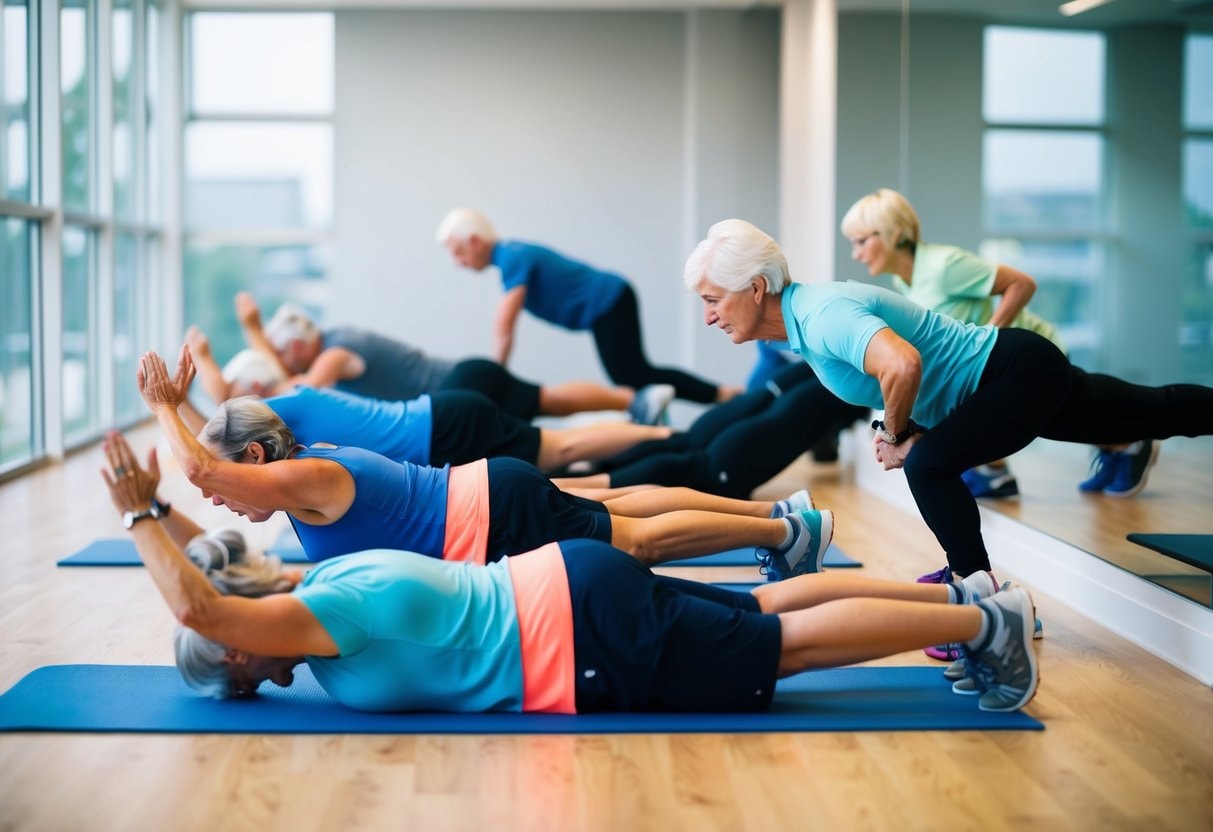
As we age, keeping our core strong becomes more important than ever. Isometric exercises offer a safe and effective way for seniors to build core strength without putting too much stress on their joints. These exercises work by holding a position steady, which can help improve balance and stability.
Isometric exercises can strengthen your core muscles without fancy equipment or complicated movements. You can do many of these exercises right at home, making them perfect for seniors who want to stay fit and active. They’re also great for people just starting to exercise or those needing low-impact options.
Planks are a popular isometric exercise for core strength. But don’t worry if you’re not ready for a full plank – there are many ways to modify these exercises to fit your fitness level. As you get stronger, you can slowly make the exercises harder. This gradual approach helps you build strength safely and steadily.
Key Highlights
- Isometric exercises allow seniors to strengthen their core muscles safely without excessive strain on joints, making them ideal for maintaining independence and preventing injuries.
- These exercises enhance balance and stability, crucial for daily activities and fall prevention, helping seniors maintain mobility and confidence.
- Isometric exercises can be performed anywhere, requiring no special equipment, making them accessible for seniors looking to incorporate fitness into their daily routines.
- Seniors can start with modified versions of exercises and gradually increase the duration and intensity, ensuring a safe and steady approach to building strength and endurance.
- Isometric exercises can easily be incorporated into everyday activities, allowing seniors to engage in fitness without dedicating extra time specifically for workouts.
Benefits of Isometric Exercises for Seniors
Isometric exercises for seniors to strengthen core muscles can help build strength, improve balance, and boost core muscle endurance. These exercises are gentle on joints while still providing effective muscle engagement.
Promoting Muscle Strength Without Strain
Isometric exercises allow you to build muscle without strain your joints excessively. This is especially helpful as you age and your joints become more sensitive. You can strengthen your muscles by holding static positions, which reduces the risk of injury. For example, wall sits help build leg strength without the impact of squats.
Simply lean against a wall with your knees bent at 90 degrees and hold the position. This engages your thigh muscles without stressing your knees. Another great option is the plank. It strengthens your core muscles while keeping your spine in a neutral position. Start with short holds and gradually increase the duration as you get stronger.
Improving Stability and Balance
Isometric exercises can significantly boost your stability and balance. This is crucial for preventing falls and maintaining independence as you age. One effective exercise is the single-leg stand. Stand on one foot while holding onto a chair for support. Gradually reduce your reliance on the chair as your balance improves.
This exercise strengthens your legs and core muscles that keep you stable. Another useful exercise is the wall press. Stand with your back against a wall and press your hands against it at shoulder height. This engages your core and back muscles, improving overall stability.
Enhancing Core Muscle Endurance
Isometric exercises are great for building core muscle endurance. A strong core helps with everyday activities and reduces the risk of back pain. Try the abdominal hold. Sit on the edge of a chair, place your hands on the seat next to your hips, and lift your feet slightly off the ground. Hold this position for as long as possible, focusing on keeping your back straight.
The dead hang is another effective exercise. Hang from a pull-up bar without pulling yourself up. This engages your core and arm muscles, improving overall strength and endurance. Remember to start slowly and gradually increase the duration of your holds. Always listen to your body and stop if you feel pain or discomfort.
Understanding Isometric Exercises
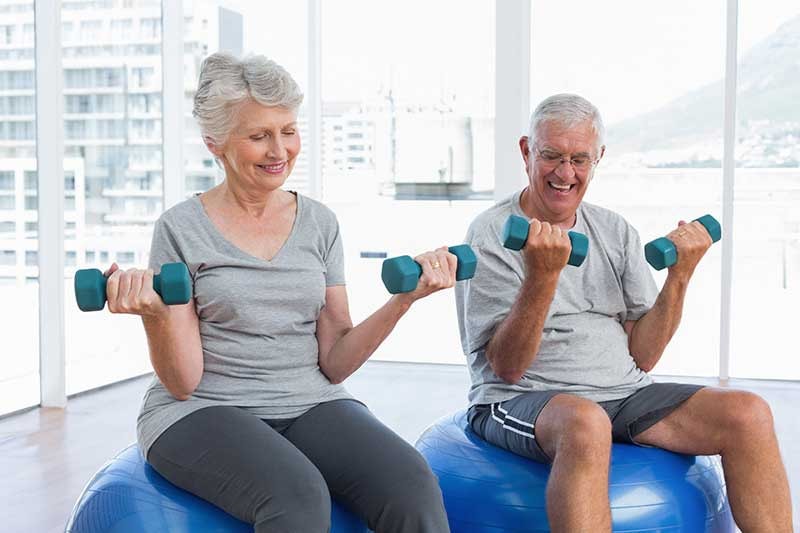
Isometric exercises for seniors to strengthen core muscles can help you build strength without moving your joints. These simple yet effective exercises are great for seniors looking to improve core strength and stability.
Defining Isometric Contractions
Isometric contractions happen when you tighten a muscle without changing its length. You create muscle tension by pushing or pulling against a fixed object or your body weight. Isometric exercises don’t involve any visible movement. Instead, you hold a position steady for a set time. This type of exercise can be gentler on your joints than other strength training forms. Common examples of isometric exercises include:
- Planks.
- Wall sits.
- Holding a dumbbell in a fixed position.
These exercises can help you build strength and improve muscle endurance without putting too much stress on your body.
Differences Between Isometric and Dynamic Exercises
Dynamic exercises involve movement, while isometric exercises keep your muscles in one position. With dynamic exercises, you lift weights or move your body through a range of motion.
Isometric Exercises:
- Don’t require special equipment.
- It can be done anywhere.
- Are often safer for people with joint issues.
Dynamic Exercises:
- Build strength through a full range of motion.
- It can improve muscle size more effectively.
- Often burn more calories.
Both types of exercise have their place in a well-rounded fitness routine. Isometric exercises can be especially good for seniors because they’re low-impact and easy to modify based on your fitness level.
Getting Started with Isometrics
Isometric exercises for seniors to strengthen core muscles can be a great way to build strength as you age. They’re easy to do at home and don’t need special equipment. Let’s look at how to start safely and set good goals.
Safety Considerations for Seniors
Before you begin, talk to your doctor. This is key if you have heart problems or high blood pressure. Start slow and listen to your body. Don’t hold your breath during exercises. Breathe normally to keep your blood pressure steady.
Pick a stable surface for balance. A wall or sturdy chair can help. Wear comfy clothes and non-slip shoes. Stop if you feel pain or get dizzy. Start with short holds of 5-10 seconds. Build up to 30 seconds over time. Do each exercise 2-3 times at first. Rest between holds.
Setting Realistic Goals
Start small and build up slowly. Aim to do isometric exercises 2-3 times a week. Set a goal to hold each pose for 10 seconds at first. Track your progress in a notebook or app. Note how long you hold each pose and how many times you do it. Try to increase by 5 seconds each week. Make your goals specific. For example, ” I’ll do wall sits for 20 seconds by next month.” Celebrate small wins along the way. Remember, any progress is good progress. Mix different exercises to work all your core muscles. Planks, bridges, and wall sits are great to start with. Add new moves as you get stronger.
Did you Know?
Many fitness websites offer free guides for senior core exercises. Check out AARP or SilverSneakers for videos and PDFs. Your local senior center might have resources, too. Ask about exercise classes or handouts.
Isometric Exercises For Seniors To Strengthen Core Muscles: Core Strengthening Isometric Exercises
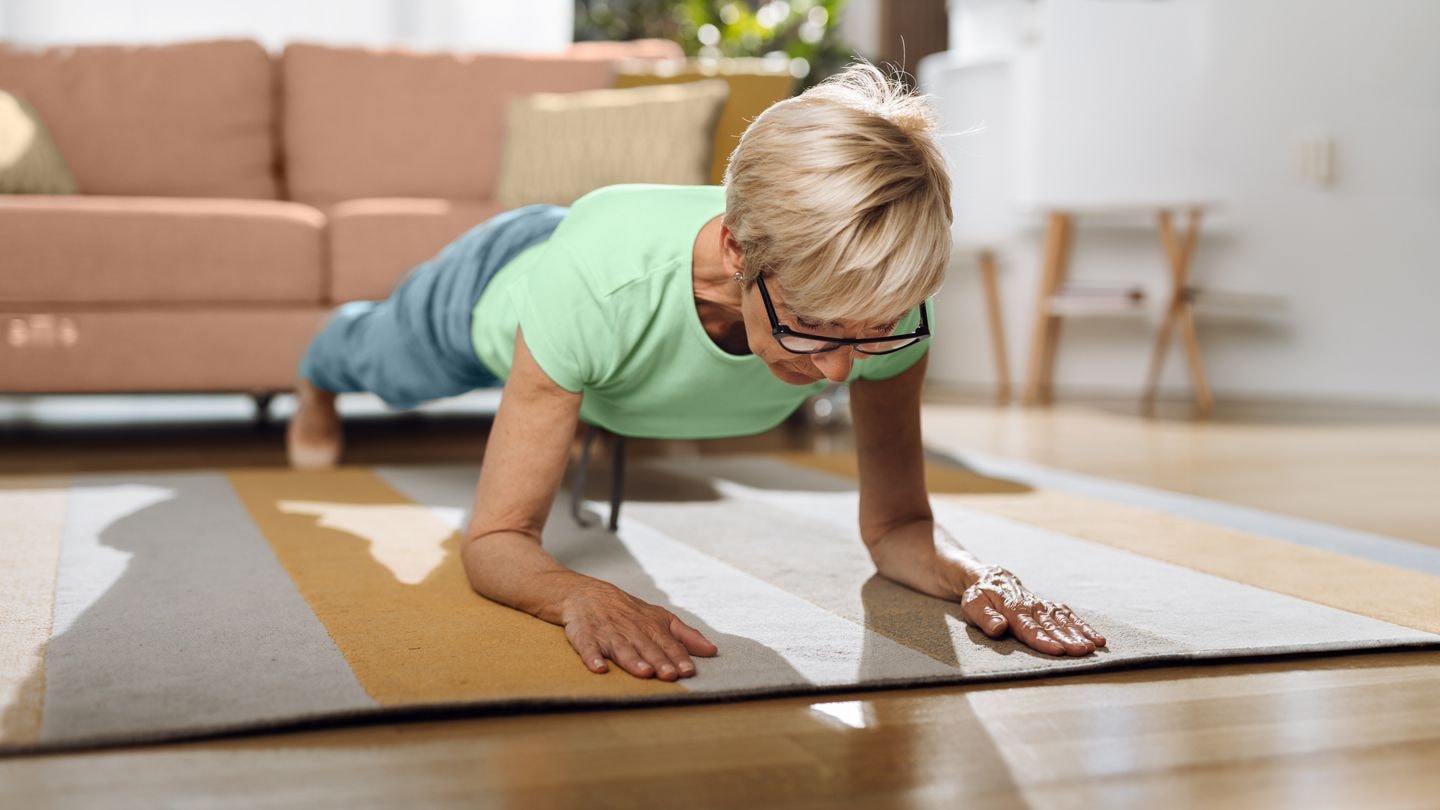
Isometric exercises can help seniors build core strength without putting too much strain on their bodies. These exercises involve holding still positions that engage your core muscles. They’re great for improving stability and balance.
Plank Variations for the Elderly
The plank is a top-core exercise for older adults. Start with a modified plank on your knees. Place your forearms on the floor, keeping your body straight from your head to your knees. Hold for 10-30 seconds. As you get stronger, try a full plank on your toes. Keep your body straight and hold for as long as you can. Aim for 30-60 seconds.
For an extra challenge, try side planks. Lie on your side, prop yourself on your elbow, and lift your hips. Hold for 15-30 seconds on each side. Remember to breathe normally during these exercises, and if you feel any pain, stop and rest.
Seated Leg Presses
Seated leg presses are great for your core and legs. Sit in a sturdy chair with your back straight. Lift one foot off the ground and press it against a wall or immovable object. Push with your leg as if you’re trying to move the wall. Hold for 10-15 seconds, then switch legs. Do this 5-10 times on each side.
This exercise engages your core as you maintain your posture. It also works your leg muscles without putting stress on your joints. Always keep your back against the chair to protect your spine. If you have knee problems, consult your doctor before trying this exercise.
Abdominal Bracing Techniques
Abdominal bracing is a simple yet effective way to strengthen your core. Sit or stand with good posture. Imagine you’re about to be punched in the stomach. Tighten your abs as if you’re bracing for impact. Hold this contraction for 5-10 seconds, then relax. Repeat 10-15 times. You can do this exercise anywhere, anytime.
Try to breathe normally while bracing. Don’t hold your breath. This exercise helps improve your core stability and can even help with back pain. Try holding the brace for longer periods as you get better at this. You can also do it while walking or during other daily activities.
Pelvic Tilts for Core Engagement
Pelvic tilts are gentle yet effective for your lower back and abs. Lie on your back with your knees bent and feet flat on the floor. Tighten your abs and press your lower back into the floor. Hold this position for 5-10 seconds, then relax. Repeat 10-15 times. This exercise helps strengthen your core while also stretching your lower back.
You can also do pelvic tilts while standing against a wall. Press your lower back against the wall, hold, and then release. This version is great for improving posture. Try lifting one foot slightly off the ground as you get stronger during the tilt. This adds an extra challenge for your core muscles.
Incorporating Isometrics into Daily Life
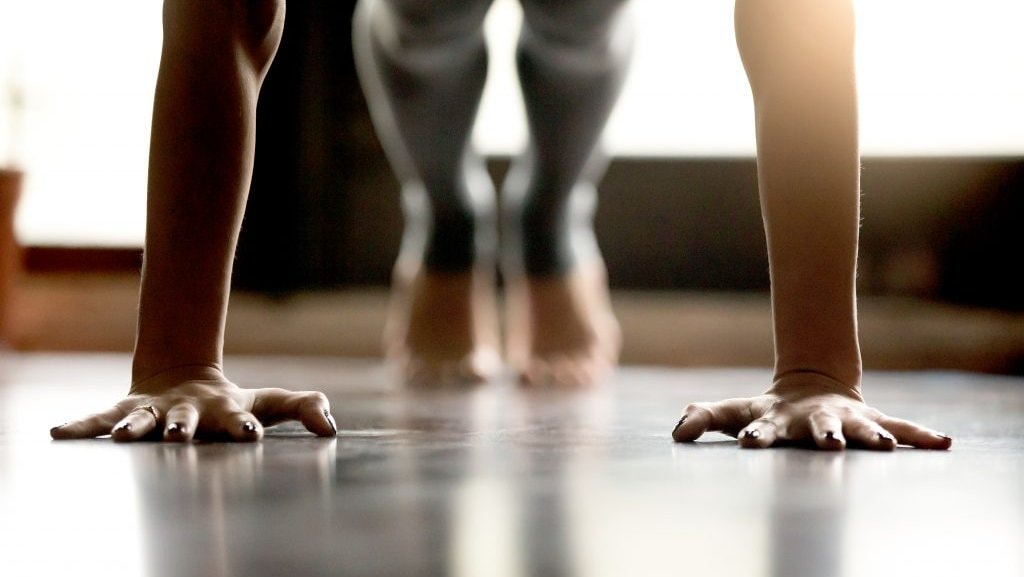
Isometric exercises for seniors to strengthen core muscles can easily fit into your daily routine. You can do isometric exercises for seniors to strengthen core muscles almost anywhere, anytime, without special equipment. This makes them perfect for seniors looking to boost core strength.
Isometric Exercises During Routine Activities
You can do isometric exercises while doing everyday tasks. Try squeezing your abs while brushing your teeth or washing dishes. Hold this contraction for 10-15 seconds, then relax. When watching TV, practice wall sits. Stand with your back against the wall, then slide down until your thighs are parallel to the floor. Hold this position for 30 seconds or as long as you can. While reading, do seated leg lifts. Sit in a chair and lift one leg slightly off the ground. Hold for 10 seconds, then switch legs.
Building a Habit of Regular Practice
Set a daily reminder on your phone or leave sticky notes around your home. This will help you remember to do your isometric exercises. Start small. Aim for just 5 minutes a day, then gradually increase. You can split this into short sessions throughout the day. Make it fun by challenging yourself. See if you can hold a plank a few seconds longer each week.
Pair isometric exercises with activities you already do daily. For example, do wall pushes while waiting for your coffee to brew. Try to involve friends or family. You can do exercises together, even over video calls.
Progressing with Isometrics
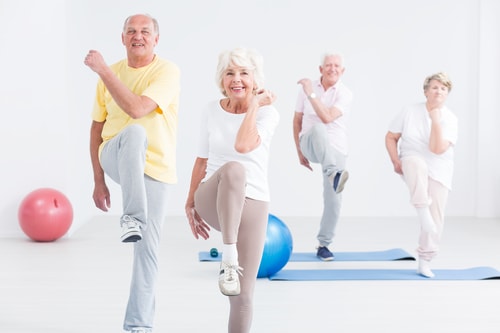
As you get stronger, you’ll want to make your isometric exercises for seniors to strengthen core muscles more challenging. This can be achieved by holding positions longer and trying new moves. Additionally, mixing isometrics with other types of exercise can yield even better results.
Gradually Increasing Duration and Intensity
Start by holding each isometric position for 10-15 seconds. As this gets easier, try to hold for 20-30 seconds. You can also do more sets. For example, start with two sets and work up to 3 or 4. To make exercises harder, try these tips:
- For planks, lift one foot off the ground.
- For wall sits, hold weights in your hands.
- For bridges, lift one leg while holding the position.
Listen to your body. If you feel pain, stop and rest. It’s okay to progress slowly. Even small improvements are good for your health.
Combining Isometrics with Other Exercises
Isometric exercises work well with other types of workouts. You can add them to your usual routine or create a new mix. Here are some ideas:
- Do isometrics between sets of weight training.
- Hold an isometric pose at the end of a stretch.
- Add short isometric holds during yoga poses.
Try a 20-minute workout that includes both isometrics and moving exercises. This can help you build strength and improve your balance. Remember to warm up before exercise and cool down after. Drink water and breathe steadily during your workout. With time and practice, you’ll get stronger and more stable.
Monitoring and Measuring Progress
Tracking your progress with isometric exercises for seniors to strengthen core muscles can help you stay motivated and see results. Keep an eye on how your strength and stability improve over time.
Keeping an Exercise Journal
Start a simple exercise journal to record your workouts. Write down the date, the exercises you did, and how long you held each position. Note any changes in difficulty or comfort level. You can use a notebook or a fitness app on your phone. This helps you see patterns and improvements. Try timing your holds and writing down the duration. Aim to increase your hold times gradually each week.
Understanding Signs of Improvement
Look for small wins as you continue your isometric core exercises. You might notice better balance when standing or walking. Daily tasks like getting out of a chair or bending to tie your shoes may become easier. These are great signs your core is getting stronger.
You might feel more stable during other activities. Your posture may improve, helping you stand taller and feel more confident. Don’t worry if progress seems slow. Small, steady improvements add up over time. Celebrate each milestone, no matter how small.
Tips for Success and Motivation
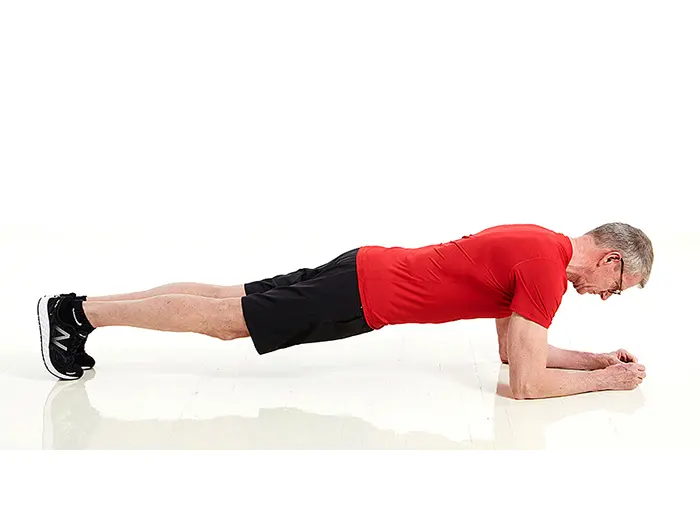
Staying on track with your core exercises, especially isometric exercises for seniors to strengthen core muscles, takes dedication and support. Here are some key strategies to help you succeed and stay motivated on your fitness journey.
Staying Consistent in Your Routine
Set small, achievable goals to start. Aim for 10 minutes of core exercises daily instead of long, infrequent workouts. This makes it easier to stick to your routine. Create a schedule and stick to it. Pick a time that works best for you right after waking up or before dinner. Make it fun! Play your favorite music or exercise with a friend to keep things enjoyable.
Track your progress. Use a simple calendar or app to mark your exercise days. Seeing your consistency can be very motivating. Reward yourself for hitting milestones. Treat yourself to something special after a week or month of consistent exercise.
Seeking Support from Peers and Professionals
Join a senior fitness class. Group settings can boost motivation and provide social interaction. Find an exercise buddy. Having a friend to work out with can make you more accountable and add fun to your routine. Talk to your doctor or a physical therapist. They can give you personalized advice and ensure your exercises are safe for your health.
Consider working with a personal trainer. Even a few sessions can help you learn proper form and get tailored exercise recommendations. Share your goals with family and friends. Their encouragement can keep you going when motivation dips.
Here’s an additional video about core exercises for seniors.
By: Margaret Martin, Physical Therapist
A Stronger Core, A Healthier Life: The Role of Isometric Exercises for Seniors
In conclusion, isometric exercises for seniors provide an effective and safe method to strengthen core muscles while minimizing the risk of injury. These static contractions are easy to incorporate into daily routines, requiring no special equipment and allowing seniors to engage their muscles without needing dynamic movement. By improving core strength, seniors can enhance their stability and balance, making everyday tasks more manageable and promoting independence.
With various exercises available, from modified planks to pelvic tilts, seniors can find suitable options that match their fitness levels. Gradually increasing the duration and intensity of these exercises ensures continuous progress, fostering a sense of accomplishment. Moreover, by combining isometric exercises with daily activities and other forms of exercise, seniors can maintain an active lifestyle and promote overall well-being. Embracing isometric exercises can lead to a stronger core, improved mobility, and a healthier, more fulfilling life.
Frequently Asked Questions
What Are Some Gentle Core Strengthening Exercises Suitable for Seniors?
Planks and bridge holds are great for seniors. You can try wall sits or seated leg lifts, too. These moves work your core without too much strain. Start with short holds, like 10-15 seconds. Build up slowly as you get stronger.
How Can Seniors Incorporate Isometric Exercises in Their Daily Routine for Core Muscle Development?
You can do isometric exercises anytime, anywhere. Try holding a plank while watching TV. Do wall sits during commercial breaks. Squeeze your abs while sitting or standing in line. These small efforts add up over time.
Can Isometric Exercises Improve Core Strength Without Putting Strain on Senior's Joints?
Absolutely! Isometric exercises are great for seniors because they don’t involve joint movement. You build strength by holding positions. This means less wear on your joints. It’s safer for those with arthritis or other joint issues.
Energize Your Fitness Path After 55!
Greetings, fitness enthusiasts! Explore the essentials of vitality and wellness with Fit After 55! Whether you’re an experienced fitness buff or just getting started, our platform is your go-to source for comprehensive health. From creating attainable goals to celebrating your progress, we’re here to support you in redefining what it means to flourish after 55. Join us on our website and Facebook page today to unlock your true potential with Fit After 55!
Explore Additional Information on Exercises for Seniors
Strength Training Improves Immune System in Seniors: The Benefits of Exercise

